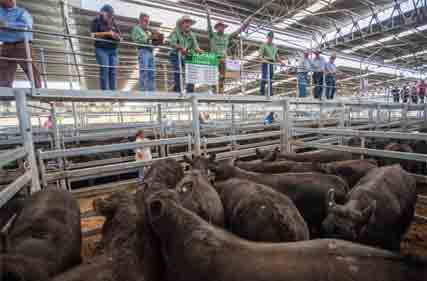 Cattle slaughter lifted 11% from Q2 and 23% from Q3 last year to 1.91 million head according to the Australian Bureau of Statistics’s official slaughter and production statistics for the third quarter of 2023.
Cattle slaughter lifted 11% from Q2 and 23% from Q3 last year to 1.91 million head according to the Australian Bureau of Statistics’s official slaughter and production statistics for the third quarter of 2023.
This makes Q3 2023 cattle slaughter the highest since Q1 2020. Slaughter lifted in every state, with the biggest increase in South Australia (48% from Q2), and the smallest increase in Western Australia (4% from Q2).
Male slaughter rose substantially less than female slaughter. Male slaughter lifted by 8% from Q2 to 974,000 head, while female slaughter rose by 13% to 936,000 head.
This means that the female slaughter rate (FSR) rose to 49% for the quarter, and just over 47% for the year-to-date. This means that the cattle herd has now entered a destocking phase.
The increase in slaughter was largely due to increased turn-off of grassfed cattle, which lifted 24% over the quarter to 1.29 million head.
Over the same period, feedlot turn-off fell by 10% to 689,000 head, which means that grassfed cattle made up 68% of total turn-off for the quarter, the largest portion of total slaughter since 2015.
Cattle carcase weights fell 1.1kg from the June quarter to 309kg. This would be partially due to the increase in cow and heifer slaughter, alongside the higher grassfed percentage of slaughter.
The increase in slaughter has driven a 20% year-on-year increase in production to 589,406 tonnes for the quarter, the largest quarter since Q4 2019.
Over the quarter, beef exports lifted 20% year-on-year (YoY) to 409,908 tonnes, while domestic consumption has risen by 7% to 179,498 tonnes.
Domestic market volume tends to be much more consistent than export volumes, meaning that Australian beef consumption in 2023 to date is the highest since 2018.
Lamb and sheep
Lamb slaughter lifted 9% from last quarter and 20% from Q3 2022 to 6.58 million head, the highest on record. Sheep slaughter fell 18% from last quarter and rose 35% from Q3 2022 to 2.09 million head. Combined slaughter was 8.68 million head, the largest quarter since Q4 2014.
The stock turn-off ratio (STR) for the quarter was just above 11%, the technical threshold for a flock destock. This is likely understating the actual extent of the destock, as nearly all of the turn-off has come from slaughter. Live export volumes for the quarter only totaled 62,580 head, down 72% from the last quarter.
Lamb carcase weights held firm from Q2 at 24.4kg, while sheep carcase weights actually lifted nearly 2kg from Q2 to 25.9kg. There was considerable variation between states. NSW and South Australia had the heaviest lambs at 25.6kg, while Queensland lambs were the lightest at 22.5kg.
High slaughter numbers and solid carcase weights have meant that sheepmeat production has risen sharply. Lamb production rose 16% from last year to 160,954 tonnes, while mutton production rose 30% from last year to 54,189 tonnes.
Notably, lamb production for the year to date is currently at 446,000 tonnes, 10% above 2022 year-to-date levels. Given that 2022 was a record year for lamb production, the substantial year-on-year increases in production mean that 2023 is almost certainly going to break the record for lamb production again.
Domestic consumption of lamb lifted 12% from year ago levels to 60,544 tonnes. Similar to beef, domestic consumption changes more slowly than export volumes, so the increase in volumes is likely to continue. So far in 2023, lamb consumption is up 10% from 2022 levels, and consumption is the highest it’s been since 2016.
-Tim Jackson, Global Supply Analyst
https://www.mla.com.au/news-and-events/industry-news/national-cattle-herd-enters-destocking-phase/
